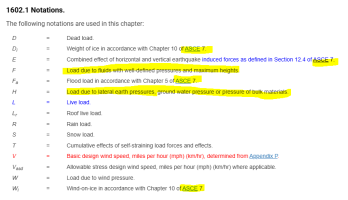Sifu
SAWHORSE
- Joined
- Sep 3, 2011
- Messages
- 3,568
Is there any "official" code definition of a retaining wall? I can't find one in the IBC, not in ASCE 7-16.
Specifically, is an in-ground concrete pool shell wall considered a retaining wall, with engineering design as a retaining wall? Most opinions I have read say no, but without a definition I am still left wondering.
I have always assumed a retaining wall as a wall that has unbalanced lateral pressure on each side, such as retaining earth on one side, with air on the other side. But a pool only exists in that state when the shell is not full of water. If not designed as a retaining wall, is the water and earth considered to balance each other or is there a lot of mathy calculations that must go with it?
I am asking in relation to a pool in seismic D, relevant to IBC 2018 1803.5.12 and ASCE 7-16 11.8.3.
Specifically, is an in-ground concrete pool shell wall considered a retaining wall, with engineering design as a retaining wall? Most opinions I have read say no, but without a definition I am still left wondering.
I have always assumed a retaining wall as a wall that has unbalanced lateral pressure on each side, such as retaining earth on one side, with air on the other side. But a pool only exists in that state when the shell is not full of water. If not designed as a retaining wall, is the water and earth considered to balance each other or is there a lot of mathy calculations that must go with it?
I am asking in relation to a pool in seismic D, relevant to IBC 2018 1803.5.12 and ASCE 7-16 11.8.3.


